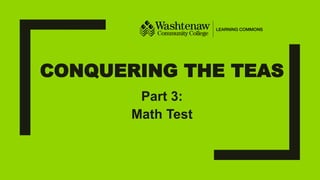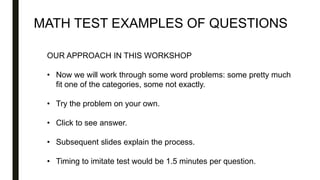The math test section contains 36 multiple choice questions to be completed in 54 minutes, equivalent to 1.5 minutes per question. About 25% of questions involve arithmetic and algebra, 15% involve tables and graphs, and 60% are word problems. Test takers should review basic math skills like operations with fractions, decimals, percents, signed numbers, order of operations, and algebraic skills like solving equations. The document provides sample exam questions and explains strategies for setting up and solving word problems that may appear on the test.



































